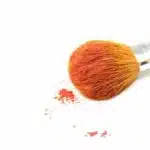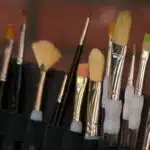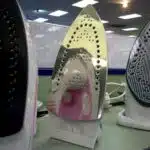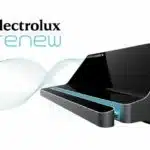As a beauty and grooming editor, it is important to ensure that the tools we use are clean and safe for our clients. Tweezers, hairbrushes, and makeup brushes are essential tools in the beauty industry, but they can also harbor bacteria if not properly sterilized. In this article, we will discuss the importance of sterilizing your tweezers and other beauty tools and provide easy steps on how to do so.
Keeping your beauty tools clean is not only hygienic but also necessary to prevent infections. Bacteria can easily accumulate on tweezers and other tools due to their direct contact with our skin. Sterilizing them regularly can kill bacteria and keep infections at bay. Additionally, keeping your tools clean can prolong their lifespan and save you money in the long run. In this article, we will explore various methods of sterilization that you can use at home to ensure that your tweezers and other beauty tools are always clean and safe for use.
Understanding The Importance Of Clean Beauty Tools
As a beauty and grooming editor, it is essential to emphasize the importance of clean beauty tools. Clean beauty tools make all the difference in your daily hygiene routine, and using dirty or contaminated tools can lead to several health issues. Maintaining good hygiene in beauty tools is not only vital for personal health but also for those around you.
The benefits of clean beauty tools are immense. If you use makeup brushes or tweezers regularly, you must keep them clean to avoid bacteria growth that can cause skin infections such as acne or staph infections. Uncleaned combs and hairbrushes can also accumulate dead skin cells and old hair products which can contribute towards dandruff and scalp irritation. Moreover, dirty nail clippers and cutters can easily contaminate your nails with bacteria that could cause fungal infections.
Ensuring proper hygiene in beauty tool maintenance should be a top priority for everyone who values their health. It is crucial to sanitize your makeup brushes and tweezers after every use with rubbing alcohol or warm soapy water. For other tools like hairbrushes or combs, remove any loose hair, soak them in warm soapy water, rinse them thoroughly and let them dry before reuse. By following these simple steps, you reduce the risk of bacterial growth on your beauty tools significantly. In the next section, we’ll discuss the dangers of bacteria on beauty tools and its potential impact on your health.
The Dangers Of Bacteria On Beauty Tools
The Importance of Hygiene in the Beauty Industry
Hygiene is an essential aspect of the beauty industry. It is imperative to keep beauty tools, such as tweezers and makeup brushes, clean to prevent bacteria from forming. Bacteria can cause infections, breakouts, and other skin irritations that could lead to long-term damage.
Common Bacteria Found on Beauty Tools
There are several types of bacteria commonly found on beauty tools. The most prevalent ones are Staphylococcus aureus, Pseudomonas aeruginosa, and Escherichia coli (E.coli). These bacteria are known for causing skin infections, including boils, abscesses, and pimples. Keeping your beauty tools clean is crucial to prevent these bacteria from accumulating and spreading.
Transition Sentence:
Now that we understand the importance of hygiene in the beauty industry and the common bacteria found on beauty tools let’s discuss when to sterilize your beauty tools.
When To Sterilize Your Beauty Tools
Sterilizing your beauty tools is crucial for maintaining good hygiene and preventing the spread of bacteria and infections. There are several reasons why you should sterilize your beauty tools regularly. Firstly, using dirty tools can lead to the transfer of harmful bacteria from one person to another, which can cause skin irritation, acne, or even serious infections. Secondly, dirty tools can harbor dead skin cells, oil, and debris that accumulate over time and create a breeding ground for bacteria. Lastly, clean tools perform better than dirty ones as they are less likely to drag or pull on hair or skin.
One of the signs that your beauty tools need to be sterilized is when they start to look visibly dirty or discolored. For example, tweezers may have build-up around the tips that is difficult to remove with rubbing alcohol alone. Makeup brushes may have caked-on product residue that affects their performance and cleanliness. In addition, if you use your beauty tools frequently or share them with others, it is recommended to sterilize them more often than if you only use them occasionally.
Overall, keeping your beauty tools clean and hygienic should be an essential part of your self-care routine. By doing so, you can ensure that your skin stays healthy and free from infections caused by dirty instruments. In the next section, we will discuss how to choose the right sterilization method for different types of beauty tools so that you can maintain their quality and extend their lifespan.
How To Choose The Right Sterilization Method
Selecting appropriate sterilization is crucial in maintaining the cleanliness of your beauty and grooming tools. Factors affecting sterilization efficacy include the type of tool, the level of contamination, and the intended use. With so many different methods available, it can be difficult to determine which one is best for you.
One factor to consider when selecting a sterilization method is the type of tool you are working with. For example, tweezers and other metal tools can often be sterilized with heat or chemicals, while makeup brushes may require a gentler approach. Additionally, if your tools are heavily contaminated or have been exposed to bodily fluids, a more rigorous method may be necessary.
Another consideration is the intended use of your tools. If you work in a professional setting where multiple clients are being serviced daily, you will likely need to sterilize your tools between each use. However, if you only use your tools on yourself at home, a less frequent sterilization schedule may be sufficient.
To help simplify this decision-making process, here are three key factors to keep in mind when choosing a sterilization method:
- The type of tool: Different materials and shapes require different approaches.
- The level of contamination: Heavily contaminated tools will require more rigorous methods.
- The intended use: Professional settings with multiple clients will require more frequent sterilization.
Now that we’ve covered some important considerations for selecting an appropriate sterilization method let’s dive into specific methods starting with heat-based sterilization.
Sterilization With Heat
The most effective way to sterilize tweezers, hair and makeup tools is through heat sterilization. This method makes use of high temperatures to kill bacteria, viruses, and other microorganisms. The benefits of heat sterilization are numerous. It is a convenient, cost-effective and easy-to-use method that can be done at home or in a professional setting.
However, proper handling of the equipment during the process is crucial as risks of improper sterilization exist. Failure to follow the recommended temperature and time can lead to incomplete sterilization which may harm clients or users. Additionally, using a contaminated tool during beauty treatments increases the risk of cross-contamination between customers which can lead to infections or diseases.
Overall, heat sterilization is an effective way to ensure that tweezers, hair and makeup tools are free from harmful microorganisms. However, it is important to take necessary precautions when performing this technique. The next section will discuss another method for sterilizing beauty tools – chemical sterilization.
| Pros | Cons |
|---|---|
| Kills all microorganisms | Some materials cannot withstand high temperatures |
| Easy-to-use | Requires special equipment |
| Cost-effective | Time-consuming |
| Can be done at home or in a professional setting | Risk of burns if not handled properly |
Moving on from heat sterilization, chemical sterilization is another option for ensuring cleanliness in beauty tools. This method involves using chemicals such as hydrogen peroxide or alcohol to disinfect equipment. While it doesn’t require high temperatures like heat sterilization does, there are some downsides to this method.
One potential disadvantage of chemical sterilization is that some materials cannot withstand certain chemicals and may become damaged over time. Additionally, some chemicals may not be effective against all types of microorganisms which could lead to incomplete disinfection if not used correctly.
In the next section, we will dive deeper into chemical sterilization and its benefits and drawbacks compared to heat sterilization.
Sterilization With Chemicals
According to a recent survey conducted by the American Academy of Dermatology, only 34% of women sterilize their beauty tools regularly. This statistic is alarming considering that dirty tools can harbor bacteria and lead to skin infections and other health issues. While sterilization with heat and chemicals are common methods, some people prefer chemical-free sterilization options.
Chemical-free sterilization methods have become increasingly popular due to concerns about the safety of chemical-based products. Fortunately, there are several effective ways to sterilize tweezers, hair, and makeup tools without using harsh chemicals. One option is to use an ultraviolet (UV) light sanitizer. UV light destroys germs by breaking down their DNA structure, effectively rendering them harmless.
While at-home UV light sanitizers are available on the market, professional sterilization services offer additional benefits. Professional services use high-quality equipment that ensures complete sterilization of all your beauty tools. Additionally, they follow strict protocols to ensure that all tools are thoroughly cleaned before being subjected to the sterilization process. As a result, you can rest assured that your beauty tools are completely germ-free and safe for use after being professionally sanitized.
Transition: With chemical-free sterilization methods becoming more popular among consumers concerned about the safety of chemical-based products, let’s explore another method – sterilization with UV light.
Sterilization With Uv Light
UV Light Sterilization: Benefits and Limitations
Using UV light sterilization is a popular method of sanitizing beauty tools like tweezers, hairbrushes, and makeup brushes. This process involves exposing the tools to ultraviolet light, killing any bacteria or viruses present on the surface. One benefit of using UV light sterilization is that it is a quick and efficient method for disinfection. The process only takes a few minutes to complete, making it an ideal option for busy individuals.
However, it is important to note that while UV light sterilization can effectively eliminate most germs and bacteria, it may not be effective against all types of viruses. Additionally, this process requires special equipment designed specifically for this purpose. While there are some sterilization devices available for home use, it’s essential to consider the size and capacity of the equipment before purchasing one.
When considering sterilization equipment for home use, consumers should take into account factors like size and compatibility with different types of beauty tools. It’s also important to ensure that the device meets safety standards and has been approved by regulatory agencies like the FDA. By taking these precautions, individuals can safely and effectively sanitize their beauty tools at home.
In summary, UV light sterilization offers many benefits as a quick and efficient method of disinfecting beauty tools like tweezers, hairbrushes, and makeup brushes. However, its limitations include effectiveness against specific types of viruses and the need for specialized equipment. When choosing a UV light sterilization device for home use, individuals should consider factors such as size and compatibility with various beauty tools while ensuring that they meet safety standards. In the next section, we will discuss another popular method of sterilizing beauty tools – steam sterilization.
Sterilization With Steam
Utilizing steam as a sterilization method offers numerous benefits over other methods, such as the ability to sterilize a variety of tools and surfaces without the use of harsh chemicals.
Steam sterilizers are widely available, with models ranging from countertop units to full-size autoclaves that can hold numerous tools.
The steam sterilization process begins by pre-cleaning the tools and surfaces to be sterilized to remove any dirt, debris, and oils.
The sterilization cycle is then initiated, with temperatures of 121-134 degrees Celsius being maintained for a specific amount of time.
After the cycle is complete, the tools are allowed to cool for some time before being handled.
Finally, the tools should be checked for signs of moisture and dried if necessary before being used.
Benefits Of Steam Sterilization
As beauty and grooming enthusiasts, we are always on the lookout for ways to keep our tools clean and hygienic. One of the best methods for ensuring that tweezers, hair and makeup tools are free from bacteria and other harmful microorganisms is through steam sterilization. This method offers numerous benefits that make it a must-have in any beauty toolkit.
One of the main benefits of steam sterilization is that it effectively kills all bacteria, viruses, and fungi on surfaces. This means that you can be confident that your tools are completely clean and safe to use. Steam sterilization is also very efficient, as it only takes a few minutes to complete the process. Additionally, this method is environmentally friendly since it does not require any harsh chemicals or solvents.
To ensure that you get the most out of steam sterilization, it is important to follow best practices for using this method. Firstly, make sure that you have a good-quality steam sterilizer with adequate capacity to fit all your tools. Secondly, ensure that you clean your tools thoroughly before placing them in the sterilizer to avoid any buildup or residue that could affect its efficacy. Finally, allow your tools to cool down completely before removing them from the sterilizer.
In conclusion, incorporating steam sterilization into your beauty routine is an excellent way to maintain hygiene standards for your tweezers and other hair and makeup tools. The benefits of steam sterilization are numerous, including its ability to kill all harmful microorganisms efficiently without damaging your tools or harming the environment. By following best practices when using this method, you can rest assured knowing that your tools are always clean, safe, and ready for use.
Steam Sterilization Equipment
As beauty and grooming enthusiasts, we understand the importance of keeping our tools clean and hygienic. One of the most effective ways to achieve this is through steam sterilization. In this article, we will discuss the benefits of using steam sterilizers and how to choose the best equipment for your needs.
Steam sterilization equipment is designed to kill all bacteria, viruses, and fungi on surfaces quickly and efficiently. Using this method ensures that your tools are free from harmful microorganisms that can cause infections or other skin issues. Moreover, steam sterilizers are environmentally friendly as they do not require any harsh chemicals or solvents.
Using steam sterilization equipment offers numerous benefits that make it a must-have for any beauty toolkit. Firstly, it guarantees complete cleanliness and safety for your tools by eliminating all harmful microorganisms effectively. Secondly, steam sterilizers are easy to use and only take a few minutes to complete the process. Lastly, these devices are durable and long-lasting, making them an excellent investment for anyone who values hygiene standards.
In conclusion, incorporating steam sterilization equipment into your beauty routine is an excellent way to maintain hygiene standards for your tweezers and other hair and makeup tools. The benefits of using steam sterilizers include their ability to kill all harmful microorganisms efficiently without damaging your tools or harming the environment. By investing in high-quality steam sterilization equipment, you can rest assured knowing that your tools are always clean, safe, and ready for use whenever you need them.
Steam Sterilization Process
Moving forward in our discussion on steam sterilization, let us delve into the process and how it works. The steam sterilization process entails exposing tools to high temperature and pressure steam that effectively kills all harmful microorganisms present. This method is widely used in various industries, including beauty and grooming, due to its numerous benefits over alternative sterilization methods like chemical disinfectants or ultraviolet light.
One of the most significant benefits of the steam sterilization process is its ability to kill all microorganisms effectively without damaging your tools. Unlike chemical disinfectants that may cause corrosion or rust on metal tools or discoloration on plastic ones, steam sterilizers do not pose such risks. Additionally, the high temperature ensures that even hard-to-reach areas are thoroughly sanitized.
Another advantage of using steam sterilization as a cleaning method is that it does not require any harmful chemicals or solvents. This makes it an eco-friendly option that aligns with environmental consciousness trends in modern society. Moreover, this feature makes it suitable for people with chemical sensitivities who may be allergic to harsh ingredients found in other cleaning agents. Overall, the steam sterilization process offers efficient and safe cleaning while minimizing damage to equipment and promoting environmental sustainability.
Sterilization With Alcohol
Sterilization with steam may be effective, but not everyone has access to a steamer or the time to wait for it. Luckily, there is a quick and easy solution: using rubbing alcohol. Not only is this method convenient, it can also be done at home with minimal effort.
To sterilize tweezers, hair, and makeup tools with rubbing alcohol, follow these steps:
- Clean the tool thoroughly with soap and water.
- Pour rubbing alcohol into a small container.
- Dip the tool into the alcohol and let it soak for at least 30 seconds.
- Remove the tool from the alcohol and let it air dry completely before using.
It’s important to note that DIY sterilization at home does have its limitations. While rubbing alcohol can effectively kill most bacteria and viruses on surfaces, it may not be able to eliminate all types of microorganisms. In addition, this method may not be suitable for certain delicate materials that could be damaged by alcohol.
Nevertheless, sterilization with rubbing alcohol is an accessible and affordable option for those in need of a quick fix. For more thorough sterilization or for tools that cannot withstand contact with liquids, boiling water may be the better choice.
Sterilization With Boiling Water
- Boiling water is a safe and effective way to sterilize tweezers, hair and makeup tools.
- To ensure the safety of the boiling water, it is important to use a pot with a lid and a thermometer to ensure that the water reaches and maintains a temperature of at least 212 degrees Fahrenheit.
- To properly prepare the boiling water, use fresh, clean water and bring it to a rapid boil for a minimum of ten minutes.
- To ensure maximum sterilization, it is important that the tweezers, hair and makeup tools are completely submerged in the boiling water for a minimum of five minutes.
- After sterilization, it is important to allow the tools to cool completely before handling them.
- Boiling water is an easy, cost effective way to sterilize tweezers, hair and makeup tools.
Boiling Water Safety
Maintaining hygiene is crucial, especially when it comes to your beauty and grooming tools. Sterilizing your tweezers, hair and makeup tools is a must to prevent the spread of infections or bacteria. One of the most effective ways to sterilize these items is by boiling them in water.
However, precautions must be taken when boiling water for sterilization purposes. Firstly, use a pot that’s deep enough to submerge all the tools completely in water. Secondly, ensure that you don’t overcrowd the pot with too many items as this may cause uneven heat distribution and affect the sterilization process. Lastly, be careful when handling hot water as it can cause burns.
Thankfully, there are alternatives to boiling water that are just as effective in sterilizing your beauty tools. You can opt for alcohol-based sprays or wipes specifically designed for beauty and grooming tools. These products are easy to use and convenient for on-the-go cleaning. Additionally, UV-C light sterilizers are also available in the market which uses ultraviolet light to kill germs and bacteria without using any chemicals.
In conclusion, boiling water is an excellent option for sterilizing tweezers, hair and makeup tools if done correctly with necessary precautions. However, if you’re looking for alternatives or want to avoid handling hot water altogether then alcohol-based sprays or UV-C light sterilizers are great options as well. Remember that keeping your beauty tools clean and hygienic not only ensures their longevity but also protects yourself from harmful bacteria and infections.
Boiling Water Preparation
Maintaining hygiene is essential in the beauty and grooming industry, especially when it comes to your tools. Boiling water is a cost-effective and straightforward method for sterilizing tweezers, hair and makeup tools. However, it’s crucial to have proper preparation before sterilization to ensure its effectiveness.
One of the most important factors in preparing boiling water for sterilization is ensuring proper temperature. The water must reach a temperature of at least 212°F or 100°C to effectively kill bacteria and germs. It’s recommended that you use a thermometer to check the water’s temperature and ensure that it remains at this level throughout the recommended sterilization time.
The recommended sterilization time for boiling water is between 10-20 minutes, depending on the item being sterilized. This time frame allows enough exposure to high temperatures to eliminate any harmful bacteria or germs fully. Once the items have been in boiling water for the recommended time, use tongs or another tool to remove them carefully from the pot and place them onto a clean towel or paper towel. Allow them to cool before using or storing them away safely.
Boiling Water Sterilization
Sterilizing beauty and grooming tools is an essential aspect of maintaining hygiene in the industry. One of the most commonly used methods is boiling water sterilization. However, there are some alternatives to boiling water sterilization that you can consider if you do not have access to a stove or prefer not to use boiling water. These include using chemical disinfectants, UV light sterilizers, or autoclave machines. Each alternative has its advantages and disadvantages, so it’s essential to research which method works best for your specific needs.
When using boiling water sterilization, it’s crucial to take some precautions to ensure the effectiveness of the method. Firstly, you should clean your tools thoroughly before placing them in the pot of boiling water. This prevents any dirt or debris from interfering with the sterilization process. Secondly, it’s important to use a thermometer to monitor the temperature of the water throughout the process and ensure that it reaches 212°F (100°C). Finally, make sure that you let your tools cool down before using or storing them away safely.
In conclusion, boiling water sterilization is a cost-effective and straightforward method for sterilizing beauty and grooming tools. However, there are several alternatives you can consider if boiling water is not an option for you. Remember always to take precautions when using this method and follow proper preparation procedures to ensure its effectiveness in killing bacteria and germs effectively.
Sterilization With Bleach
Bleach is a common household item that can be used to sterilize tweezers, hair and makeup tools. Its properties make it an effective disinfectant that can eliminate harmful bacteria and viruses. However, it is important to remember that bleach should always be diluted before use.
To sterilize your tools with bleach, you will need to create a solution of one part bleach and nine parts water. This will create a 10% bleach dilution that is safe for use on most surfaces. Keep in mind that this mixture should be made fresh each time you want to sterilize your tools.
If you prefer to avoid using bleach, there are alternative methods for sterilizing your beauty tools. One option is to use rubbing alcohol or hydrogen peroxide, which can also effectively kill bacteria and viruses. Simply dampen a cotton ball or cloth with the solution and wipe down your tools thoroughly. Another option is to invest in a UV-C light sterilizer, which uses ultraviolet radiation to kill germs without the use of chemicals.
Transition: While bleach and other chemical agents are effective ways to sterilize your beauty tools, there are alternative methods available for those who may have concerns about using chemicals. In the next section, we will explore how you can use your microwave as a tool for sterilization.
Sterilization With Microwave
Microwave sterilization is a quick and easy way to sanitize your tweezers, hair, and makeup tools without the need for harsh chemicals. It involves placing your tools in a microwave-safe container with water and heating them on high for a specific amount of time. While this method has its advantages, it also has some drawbacks that should be considered.
Pros of Microwave Sterilization:
- Quick and convenient
- Does not require chemicals or special equipment
- Kills most bacteria and viruses
- Can be used on a variety of tools
- Cost-effective
Cons of Microwave Sterilization:
- Not effective against all types of bacteria and viruses
- May damage certain materials or tools if not done properly
- Can be dangerous if the container is not microwave-safe or if overheated
- Requires careful timing to ensure proper sterilization
- Does not remove dirt or debris from the tools
While microwave sterilization may seem like an attractive option, there are alternative techniques that can also effectively sanitize your beauty tools. These include boiling your tools in water, using UV light sterilizers, or using chemical disinfectants. It’s important to choose the method that works best for your needs and preferences.
In order to ensure maximum hygiene when grooming yourself, it is essential to also take into consideration how you clean your brushes and combs. Here are some tips on how to properly sanitize these often-overlooked items.
Sterilizing Hairbrushes And Combs
As much as we use hairbrushes and combs, it is essential to keep them clean. Hair products, dust, and scalp oils accumulate on these tools, making them a breeding ground for bacteria. Therefore cleaning frequency is crucial in maintaining good grooming habits. Depending on how often you use the brush or comb, it is recommended to clean them once a week or every other week.
When it comes to cleaning hairbrushes and combs, natural cleaning solutions are preferred over chemical ones as they can damage the bristles of the brush or comb. Vinegar is one of the most effective natural solutions for removing dirt and grime from your hair tools. Mix equal parts of vinegar and water in a bowl and soak your hairbrush or comb for about 20 minutes before rinsing with warm water.
In conclusion, keeping your hairbrushes and combs clean is important to maintain healthy grooming habits. Cleaning frequency depends on usage but should be done regularly to prevent bacterial buildup. Natural cleaning solutions like vinegar are preferred over chemical ones to avoid damaging bristles. In the next section, we will look at how to sterilize makeup brushes for better hygiene practices.
Sterilizing Makeup Brushes
When it comes to maintaining a clean and healthy beauty routine, sterilizing makeup brushes is just as important as cleaning tweezers and other grooming tools. Unclean makeup brushes can lead to acne breakouts, skin irritation, and even infections. Fortunately, there are several effective ways to sterilize your makeup brushes.
One of the simplest methods is using cleaning solutions designed specifically for makeup brushes. These products are typically available at beauty supply stores or online retailers. To use them, simply wet your brush with water and then dip it into the cleaning solution. Gently swirl the brush around in the solution until all traces of makeup have been removed. Rinse the brush thoroughly with warm water and then let it air dry.
If you prefer a more DIY approach, there are several home remedies that can effectively sterilize your makeup brushes. One popular option is using a mixture of equal parts vinegar and water. Simply mix the two ingredients together in a bowl and then dip your brushes into the solution. Swirl them around for a few seconds before rinsing thoroughly with warm water and allowing them to air dry.
Maintaining clean beauty tools is essential for a healthy skincare routine. By regularly sterilizing your makeup brushes, tweezers, and other grooming tools, you can help prevent breakouts and infections while ensuring that your skin stays healthy and radiant. In our next section, we’ll cover some helpful tips for keeping your beauty tools clean between uses so that you can enjoy flawless skin every day!
Tips For Maintaining Clean Beauty Tools
Sterilizing your makeup tools is a crucial aspect of maintaining good hygiene. By doing so, you can prevent the growth and spread of harmful bacteria that could cause breakouts or infections. However, it’s not just makeup brushes that require sterilization; tweezers, hair tools, and other beauty tools need to be disinfected regularly too.
One way to sterilize your beauty tools is through DIY sterilization methods. Natural cleaning solutions such as vinegar and tea tree oil are excellent options for disinfecting your tweezers and other metal tools. Simply mix equal parts of water and vinegar in a bowl, add a few drops of tea tree oil, and soak your tweezers in the solution for 10-15 minutes before rinsing them with warm water.
Another way to keep your beauty tools clean is by storing them properly. After each use, wipe down your tweezers or hairbrush with a clean cloth or tissue paper to remove any excess product buildup. Then, store them in a dry place away from moisture, sunlight, or dust particles. This will help prolong their lifespan while also keeping them germ-free.
To ensure that you’re taking proper care of your beauty tools, here are some additional tips to keep in mind:
- Regularly wash synthetic brushes with mild soap and water.
- Avoid sharing personal grooming items like nail clippers or razors.
- Replace disposable items like makeup sponges after each use.
By following these simple steps for DIY sterilization and natural cleaning solutions, you can ensure that your beauty tools remain clean, hygienic and safe for use. Remember that when it comes to personal grooming items, cleanliness should always be a top priority!
Conclusion
Clean beauty tools are crucial to maintaining healthy skin and hair. Bacteria can easily accumulate on tweezers, hairbrushes, combs, and makeup brushes, leading to infections and breakouts. To avoid these dangers and maintain clean beauty tools, it is important to sterilize them regularly.
Sterilization methods include heat and microwave sterilization. Heat sterilization involves boiling the tools in water for 10-15 minutes, while microwave sterilization involves placing the tools in a microwave-safe container with water for 1-2 minutes. Hairbrushes and combs can be sterilized by soaking them in hot water with shampoo or vinegar, while makeup brushes require gentle cleansing with soap and water.
To maintain clean beauty tools, it is important to wash them regularly after each use and store them in a clean, dry place. Additionally, replacing old or damaged tools can prevent bacteria buildup.
In conclusion, keeping your beauty tools clean is essential for healthy skin and hair. By understanding the dangers of bacteria on these tools and utilizing proper sterilization methods such as heat or microwave sterilization, you can ensure their cleanliness. Furthermore, it is important to maintain clean beauty tools through regular washing and storage in a hygienic environment. Remember – clean beauty tools create beautiful results!
Image Credits
- “Cell phone charger+sterilizer” by kalleboo (featured)










![How To Get Hair Out Of A Bathtub Drain 10 2/365 [Bathtub Drain]](https://green-life.blog/wp-content/uploads/2023/05/cOEu5edpkejq-150x150.jpg.webp)


















